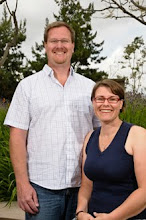 At the end of March next year I will be co-presenting a workshop at the CCOWA Perth Children's Ministry Convention. The topic for the 2009 conference is "Music with Meaning" and my workshop is titled "Integrating children's music and church music".
At the end of March next year I will be co-presenting a workshop at the CCOWA Perth Children's Ministry Convention. The topic for the 2009 conference is "Music with Meaning" and my workshop is titled "Integrating children's music and church music".
I am posting my workshop draft in dribs and drabs over up-coming "Tuneful Tuesdays" and whoever wants to comment and help me improve the draft before it becomes the final version will be welcome and appreciated for their efforts. (See here for previous Tuneful Tuesday posts.)
---
I. Helping children participate in music with the entire congregation
2. Choosing songs with Kids in the Congregation in mind
Songs which have a simple rhythm and a tempo that is upbeat but not too fast for children to sing along to, and which are easy to clap along to, or can involve other movement are both easier and more enjoyable to sing for children and adults.
A) A catchy tune will help everyone in the congregation remember the words, especially the children.
> Hymns and songs with multiple verses sung to the same tune are easier for children to learn and sing along with than songs which have multiple elements such as verses, chorus, bridge and musical interlude.
> Tunes should be in major keys (C, G, D) rather than minor keys.
> Tunes should have a strong, simple rhythm (4 4) and not be syncopated.
B) It is great to occasionally include a song typically considered a “Children’s Song” within the congregational singing time. This shows the children that music they might well consider to be “theirs” is part of the musical repertoire of the wider congregation, just as the children themselves belong to the wider congregation. It can help the children to understand that they belong in the wider congregation, and it can also help the adults to realise that the children belong there as well.
> Children’s Songs used with the whole congregation, which may be appropriate, could include something from the popular EMU Music kids’ CDs or by Colin Buchanan. Some of these, while written with children in mind, have lyrics that are great for teaching and reviewing basic doctrines or for hearing the words of Scripture aloud.
> Traditional Children’s Songs (the Christian music equivalent to nursery rhymes), such as Jesus Loves Me and Trust and Obey are also great if used sparingly. These in particular can also be appreciated by the elderly members of the congregation who will often recall them with fond memories of when they used to sing them as children.
C) Children will benefit from being involved with the music as well as with the singing.
> Children can join in with some musical accompaniment to some songs if they are given suitable instruments as they enter for church, such as maracas, tapping sticks or tambourines. This can go a bit crazy, particularly if there are too many instruments handed out or if the instruments are overly noisy ones.
> An alternative is to have one or more of the Musicians play “children’s instruments” in a position where they are visible and audible to the congregation. This will present the children with sounds they are familiar with from home, kindergarten and school situations, and help them to recognise that the music belongs to them, as well as to the adult members of the congregation.
---
Next Tuneful Tuesday: II. Making congregational music understandable and meaningful
[Image courtesy of CCOWA.]
The J. K. Rowling Christmas Quiz!
1 week ago









No comments:
Post a Comment